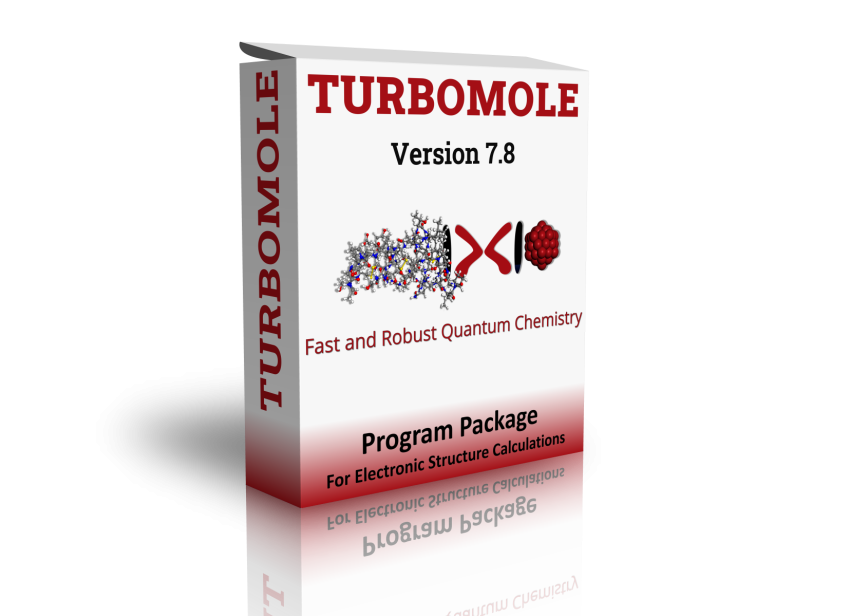Program Package For Electronic Structure Calculations
Features at a Glance
- All standard and state of the art methods for ground state calculations
- very fast molecular and periodic DFT codes
- very efficient Coupled-Cluster-F12 implementation
- Excited state calculations at different levels (full RPA, TDDFT, ADC(2), CC2, …)
- Many unique functionalities for excited states at the DFT and CC2 level
- Broad support for symmetry and relativistic effects
- Structure optimizations and molecular dynamics calculations
- Various properties and spectra
- Fast and reliable code
- Parallel version for all kind of jobs
Turbomole 7.8
Turbomole version 7.8 has been released.
Turbomole 7.8 accurately predicts NMR shifts of large systems with heavy elements in less than an hour!
J. Chem. Phys. 152, 184102 (2023)
Open Access
Open Access
Intermolecular Interactions in Molecular Organic Crystals
Using TURBOMOLE, the performance of two dispersion-corrected functionals, PBE-D3 and B97-D, is assessed for molecular organic crystals of the X23 benchmark set. The accuracy of the calculated lattice energies demonstrates the ability of current DFT methods to assist in the quest for possible polymorphs and enantioselective crystallization processes.
Read MoreComputing a Cleaner Polyurethane Synthesis
Advanced modeling using TURBOMOLE allowed scientists of BASF to identify an efficient catalyst that experiments show can make polyurethanes without unwanted and toxic formaldehyde emissions.
Read MoreFast Magnetic Shielding Constants
We present a highly efficient TURBOMOLE implementation for density functional calculations of chemical shielding constants. It employs the multipole-accelerated resolution of the identity for the calculation of the Coulomb part, which complements the usage of low order scaling routines for the evaluation of the exchange-correlation part.
Read MoreRelativistic NMR Shielding Tensors and Chemical Shifts
An efficient TURBOMOLE implementation of scalar-relativistic
NMR shielding tensors based
on (one-electron) spin-free exact two-component
theory allows for routine
calculations of large molecules with heavy
atoms.
Read MorePhotobasicity Mediated by Water Oxidation
Using TURBOMOLE a mechanism explaining the photobasicity of 5-methoxyquinoline is proposed on the basis of nonadiabatic molecular dynamics simulations using TDDFT and fewest switches surface hopping and analysis of existing ultrafast spectroscopy experiments.
Read More
Previous slide
Next slide
